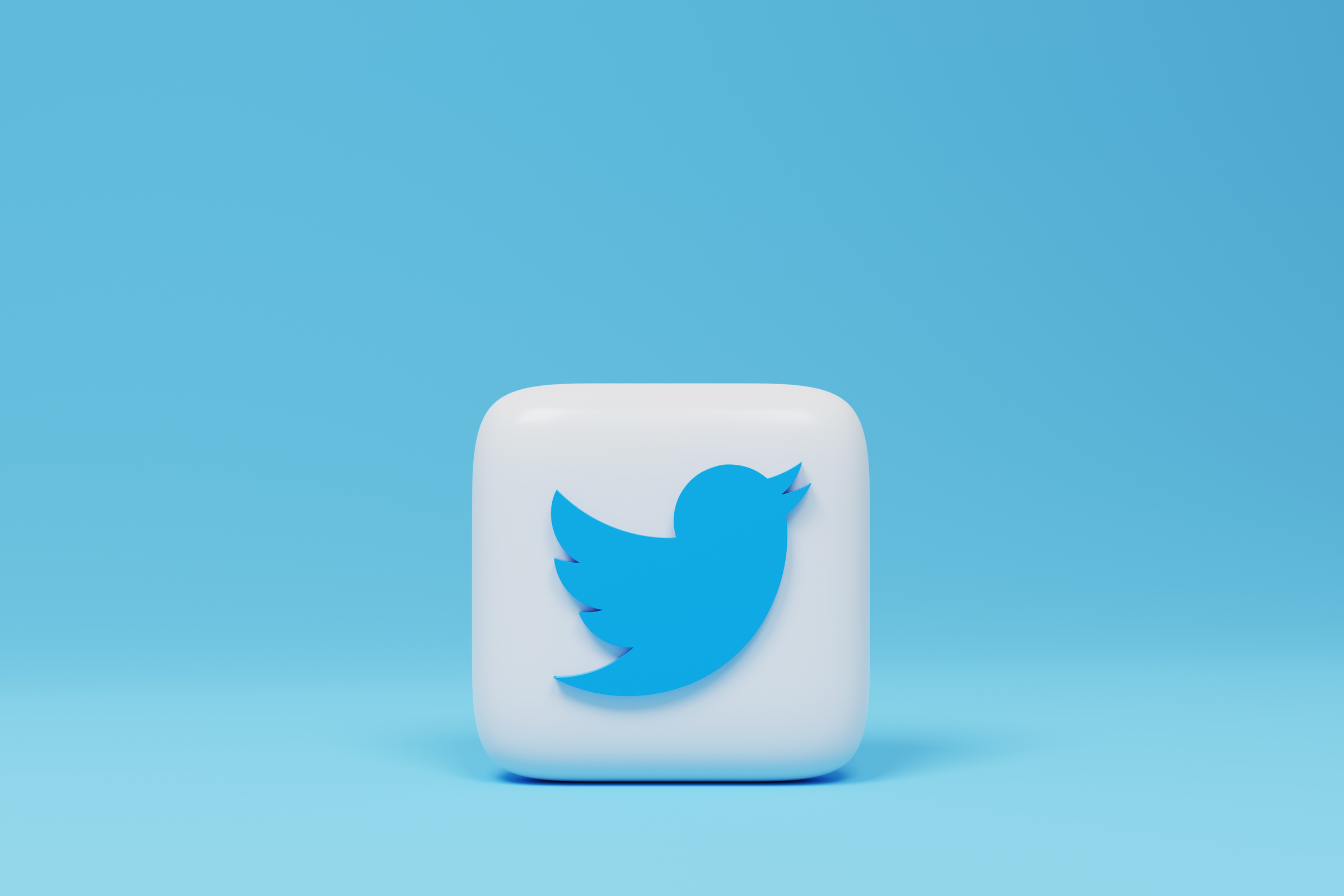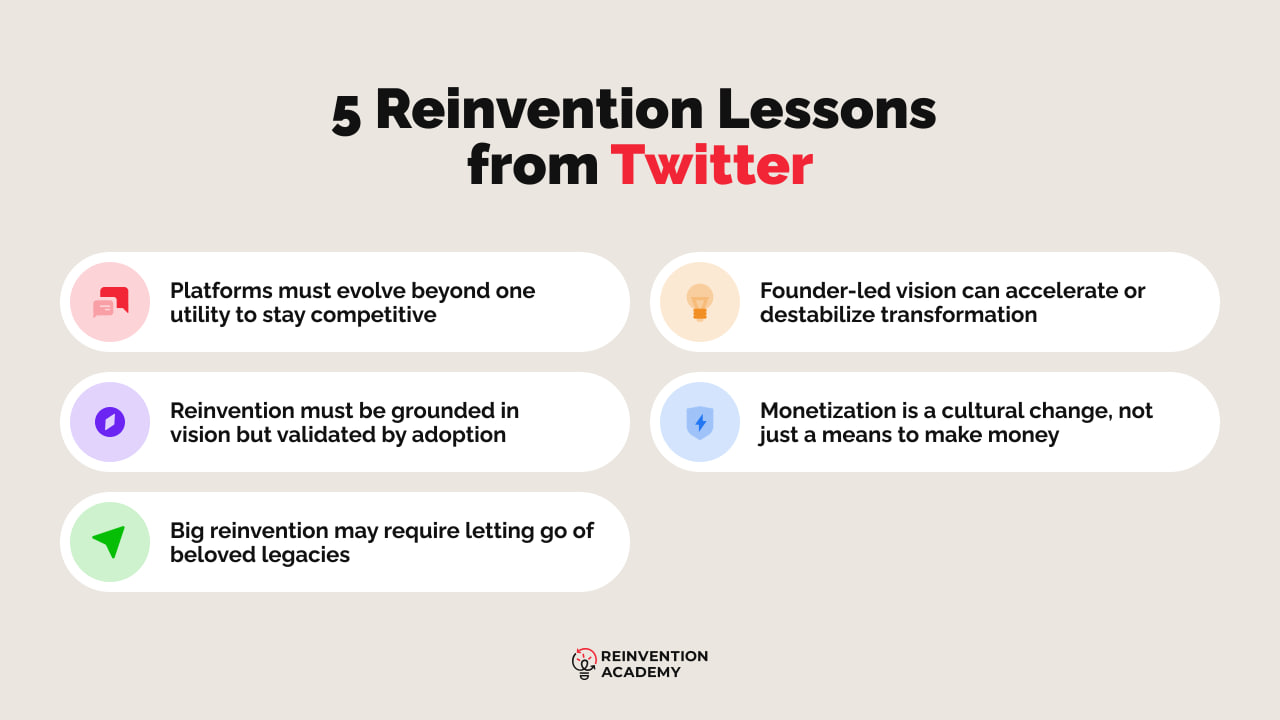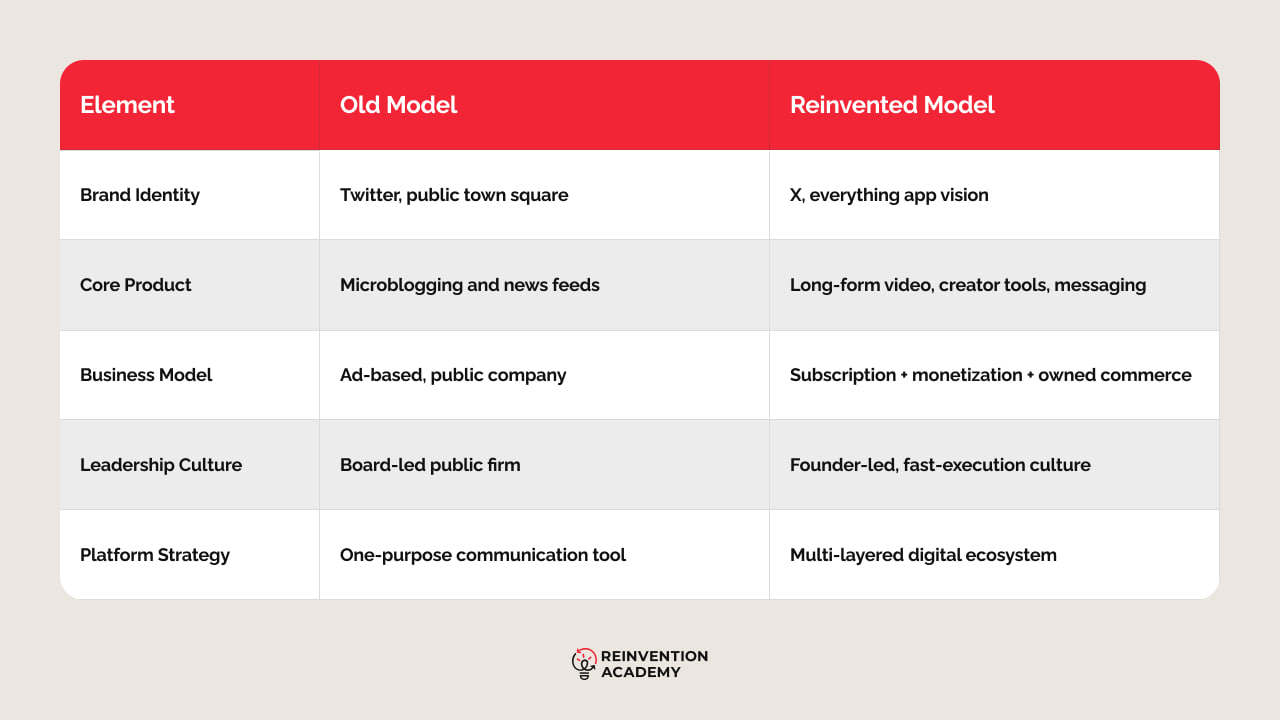How Twitter Was Reinvented Into X: A Bold Bet on the Future of Platforms
Read about Twitter's drastic metamorphosis into X under Elon Musk, which illustrates strategic reinvention through creator monetization, platform expansion, and cultural change.

Twitter, Inc. is a social media platform originally founded in 2006 that became synonymous with real-time news sharing and public discourse through 140-character messages. Before Elon Musk's Twitter changes began, the platform served 238 million users globally. After Musk's $44 billion acquisition in October 2022, the company went private and underwent a complete Twitter rebrand to X.
The story of Twitter's business transformation reads like a masterclass in high-stakes reinvention. Twitter was initially created as a microblogging platform. It has since evolved into a place to test an ambitious “everything app platform” vision. Dr. Nadya Zhexembayeva’s principles of reinvention are on show in this drastic change. By changing from Twitter to X, the company signified moving from a bird to an actual creature.
Why Twitter Needed Reinvention
The Twitter case study begins with mounting pressure that made change inevitable.
- Platform stagnation was killing Twitter's growth. Ad revenue peaked at $4.73 billion in 2022 but dropped 30% to $3.31 billion in 2023. The decline continued into 2024 with revenue falling to approximately $2.5 billion. Major advertisers fled after Musk's acquisition, creating a financial crisis.
- Competition from TikTok, Meta’s Threads, and creator-focused platforms exposed Twitter's limitations. Users wanted more than 140-character updates. They demanded video content, long-form writing, and direct monetization tools that Twitter couldn't provide. The Twitter creator economy was practically nonexistent compared to YouTube or Substack.
Dr. Zhexembayeva calls this the "Titanic Syndrome." Success trapped Twitter in an outdated model while the market moved toward multimedia experiences and creator empowerment.
Twitter's Reinvention Strategy: Content, Creators, and Commerce
Musk's X reinvention strategy attacked three major areas simultaneously:
1. From Microblogging to Media Hub
The character limit expansion marked just the beginning. How Twitter reinvented itself included adding long-form articles, encrypted direct messages, and multi-hour video uploads. Twitter Spaces brought live audio conversations to compete with Clubhouse and podcasting platforms.
These changes aimed to increase daily usage time. Previous data showed users spent only 11 minutes per day on the platform. Video and audio content could extend engagement significantly.
2. Creator Monetization and Paid Tiers
The X monetization model introduced multiple revenue streams for users:
- X Premium subscriptions starting at $8 monthly
- Revenue sharing from ad impressions
- Subscription content behind paywalls
- Enhanced verification tied to payment, not identity
This shift represented a fundamental change from advertising-dependent revenue to user-powered economics. Creators could finally earn money directly from their audience instead of relying solely on external sponsorships.
3. Vision for an Everything App
Musk's ultimate goal involves creating a Twitter platform evolution toward a "super app" similar to China's WeChat. Plans include:
- X Payments for financial transactions
- Shopping and e-commerce integration
- Banking and cryptocurrency features
- AI-powered recommendations through Grok chatbot
The domain change from twitter.com to x.com in May 2024 symbolized this transformation.
Two Enablers Behind the Transformation
Two structural changes made Twitter's rapid reinvention possible, where traditional corporate governance would have stalled for years:
1. Founder-Driven Leadership and Ownership Model
Elon Musk's singular vision, pace, and communication style replaced traditional corporate decision-making. Where Twitter's previous leadership required board approval and committee consensus, Musk announced major changes through personal tweets. His $44 billion private acquisition eliminated shareholder oversight entirely.
Personal branding became deeply embedded in platform identity. Musk's 218 million followers made him the most-followed account on X. His personal controversial statements directly affected platform perception and advertiser confidence. The Elon Musk Twitter changes became inseparable from his public persona.
Aggressive roadmaps driven by founder authority enabled rapid feature development. Traditional tech companies spend months testing new products. Musk's direct control allowed immediate implementation of ideas like extended character limits, creator revenue sharing, and the Twitter rebrand to X.
2. Lean, Rapid Execution Culture
Organizational flattening and talent turnover eliminated bureaucratic layers. Approximately 75% of Twitter's workforce was laid off. This dramatic reduction forced remaining employees to take on multiple responsibilities and make decisions previously requiring manager approval.
Faster product releases and experimentation cycles replaced cautious development practices. Features launched with minimal testing. The X monetization model rolled out rapidly despite user complaints. Bug fixes happened in real-time rather than scheduled updates.
From cautious legacy company to hyper-adaptive tech organization marked the cultural shift. Twitter's previous culture prioritized stability and user safety over innovation speed. X embraced constant change, frequent policy updates, and experimental features that traditional social media companies would never risk implementing.

Dr. Nadya Zhexembayeva's Reinvention Lens on Twitter/X
The Twitter case study on reinvention illustrates what happens when a company chooses high-risk transformation over safe incremental changes.
- Letting go of an iconic legacy for something unproven required abandoning one of the most recognizable brands in tech history. The blue bird logo had global recognition spanning over a decade.
- Aligning strategy with macro shifts meant recognizing that the creator economy had outgrown Twitter's limitations. Twitter wasn’t able to offer the same direct monetization as Substack, OnlyFans, and YouTube. The X monetization model followed this trend with revenue sharing, subscription content, and tools for creators.
- Embedding boldness into organizational DNA showed up in every decision. Feature launches happened without extensive testing. Policy changes occurred through Musk's direct tweets rather than corporate communications.
- Reframing platform identity from social media to infrastructure represents the most ambitious aspect. X aims to become foundational infrastructure for digital life. The shift from feature-focused to infrastructure-focused thinking mirrors how Amazon Web Services transformed from book sales to cloud computing.
X didn't just rename Twitter; they reimagined what a platform could become. Whether X ultimately succeeds or fails, it embodies Dr. Zhexembayeva's core reinvention principles in ways few companies dare attempt.
5 Reinvention Lessons from Twitter/X for Business Leaders
- Big reinvention may require letting go of beloved legacies. Twitter's blue bird was one of tech's most recognizable symbols, yet Musk abandoned it completely. The Twitter rebrand to X shows that attachment to past success can prevent necessary future growth.
- Founder-led vision can accelerate or destabilize transformation. Musk's direct control enabled rapid changes impossible under traditional governance. However, his personal brand became inseparable from the platform, creating both momentum and volatility that affected user trust.
- Platforms must evolve beyond one utility to stay competitive. The Twitter platform evolution from microblogging to multimedia hub reflects market reality. Single-purpose platforms lose ground to comprehensive experiences that serve multiple user needs daily.
- Monetization is a cultural change, not just a means to make money. The Twitter subscription model required users to think differently about platform value. Moving from free, ad-supported content to creator-powered economics changed fundamental user expectations and behaviors.
- Reinvention must be grounded in vision but validated by adoption: Musk's everything-app platform concept drives every decision, yet around 388 million monthly users suggest the core audience remains engaged. Vision without user acceptance fails regardless of leadership conviction.
Twitter Reinvention at a Glance

Final Word: Why Twitter's Reinvention as X Still Sparks Debate
The Twitter subscription model and reinvention in tech platforms continue generating strong reactions. Business leaders should ask fundamental questions about their own organizations:
- What “sacred cows” are we protecting that limit growth?
- Are we building for our current users or future opportunities?
- Sometimes protecting legacy brands prevents necessary evolution.
Dr. Nadya Zhexembayeva reminds us, "Reinvention is not about getting better at what you already do; it’s about having the courage to be what the future needs." Twitter's transition to X is a perfect example of this. Musk's decision to go all-in on Twitter may not pay off, but it speaks of a kind of mindset that differentiates those who reinvent from those who merely optimize their way into irrelevance.


.svg)